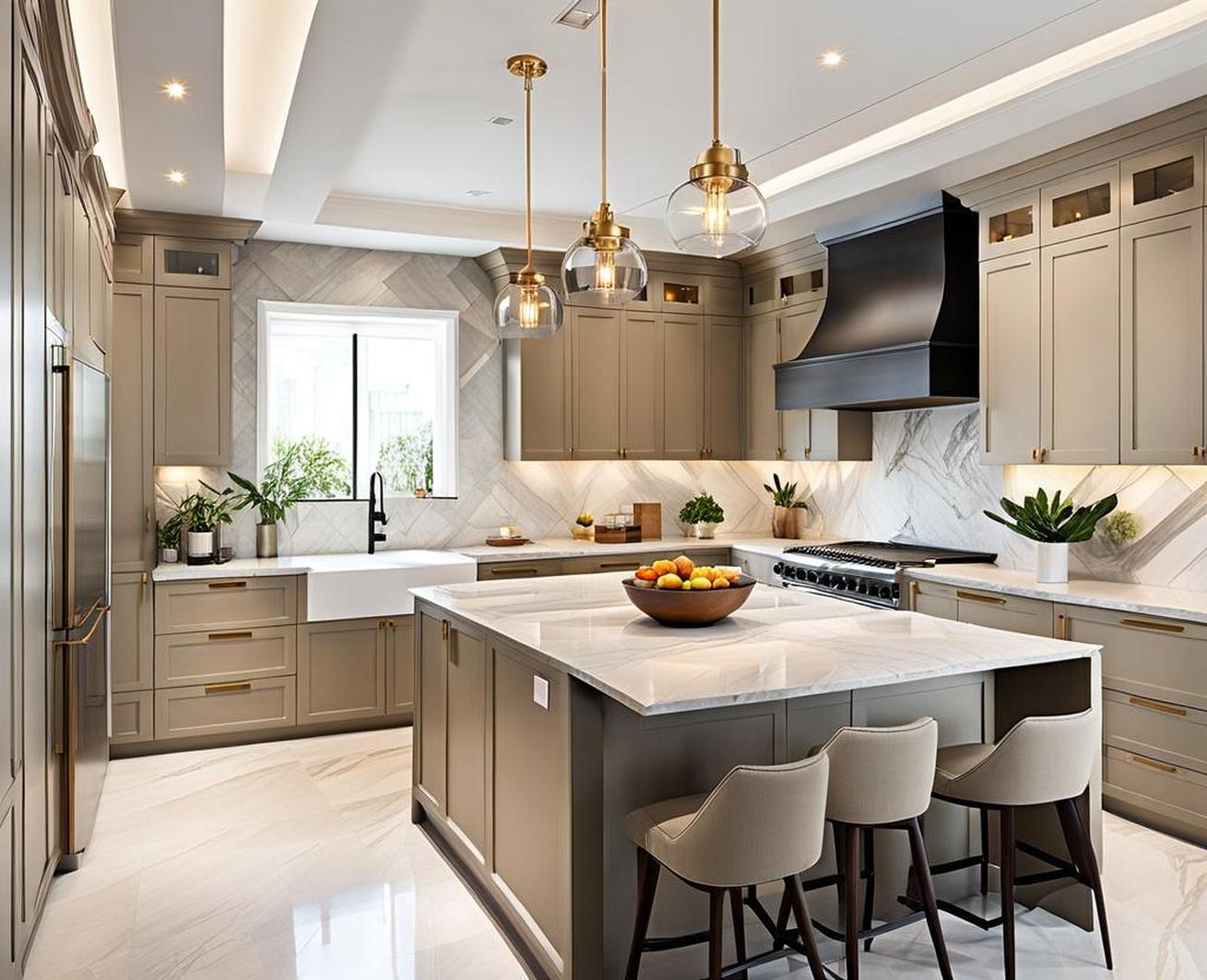Neutral color palettes have become increasingly popular in kitchen designs over the years. The clean, bright look of whites and beiges creates a timeless and elegant aesthetic that pairs well with any style, from modern to traditional. Neutral kitchens have a soothing and relaxing vibe, while still managing to feel cozy and inviting. Whether you prefer an all-white minimalist look or incorporating natural wood tones, neutral schemes offer endless possibilities. Read on to explore how to select the perfect neutral tones and use stylish finishing touches to create a sophisticated kitchen sanctuary.
Choosing Neutrals to Suit Your Style
When starting your neutral kitchen design, carefully consider the undertones of any grey, beige, or white shades. Cool greys with blue undertones complement marble counters and stainless steel, while warm greys with brown undertones pair better with wood cabinets and granite. For whites, select warmer antique shades for traditional spaces and bright clean whites for a more modern look. Beyond classic white and beige, don’t overlook unique neutrals like light blue for a coastal feel or sage green for an earthy vibe.
All-White Palettes
For a minimalist modern aesthetic, go for an all-white color scheme. Pair glossy white cabinetry with white quartz counters and chrome fixtures. Add visual interest through varied textures and materials like a brick or concrete backsplash. All-white kitchens feel clean, bright and endlessly fresh.
Layered Neutrals
Create depth by layering different neutral tones and materials. For example, navy lower cabinets grounded by oak floors and a marble-topped island. The mix of cool and warm neutrals adds subtle sophistication. Define zones with paint or finishes like a glossy white wall behind the range.
Neutrals with Pops of Color
While the backdrop remains neutral, bold accent colors in appliances, bar stools or a backsplash breathe life into the space. Varying materials like wood, marble, and metals also add interest while keeping the overall palette soothing and relaxed.
Incorporating Texture and Materials
Texture and natural materials transform neutral kitchens from boring to brilliant. Wood cabinetry instantly warms up a space, while exposed brick or a stone backsplash add depth. Here are some ideas for materials to incorporate:

- Wood cabinetry and open shelving
- Marble, granite, or concrete countertops
- Subway tile or patterned backsplash
- Textured paints or wallpaper
- Weathered finishes like reclaimed wood
- Pendant lights or hardware in black, brass, or bronze
Design Concepts for Neutral Kitchens
Modern Industrial
The modern industrial look pairs well with neutral palettes. Use exposed ductwork, piping or cinderblock walls as an edgy contrast to crisp white cabinetry. Add marble counters, chrome fixtures and retro styled appliances for a hip, urban feel.
Farmhouse Chic
For a cozy farmhouse kitchen, incorporate wood elements like open shelving, butcher block counters or a reclaimed wood dining table. Weathered tin tiles, woven baskets and gingham add to the pastoral charm. Paint cabinets in a light neutral like ivory or sage.
Traditional Elegance
Create a timeless traditional kitchen with panelled cabinetry, polished hardware and plush window treatments. Sophisticated glass chandeliers illuminate marble counters and antique furnishings. Keep the palette relaxed with warm beiges, taupes and creams.
Final details can make or break your neutral kitchen design. Consider these tips:
- Add plants, fruits or flowers for fresh pops of color
- Incorporate accent lighting under cabinets or shelves
- Choose a statement pendant or chandelier to anchor the space
- Mix up hardware and fixtures from sleek to ornate
- Use artwork, textiles or rugs to introduce patterns
- Display collections of glassware or ceramics
neutral kitchens balance style and flexibility. From modern white to cozy farmhouse, the right neutral palette and textures create a timeless, welcoming kitchen. Use these tips to design your dream neutral space.
